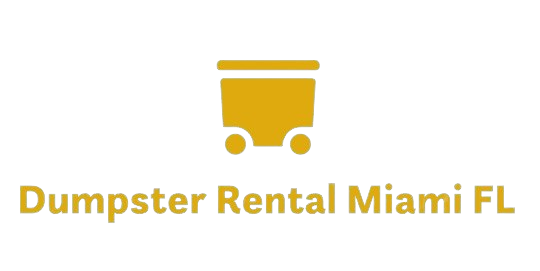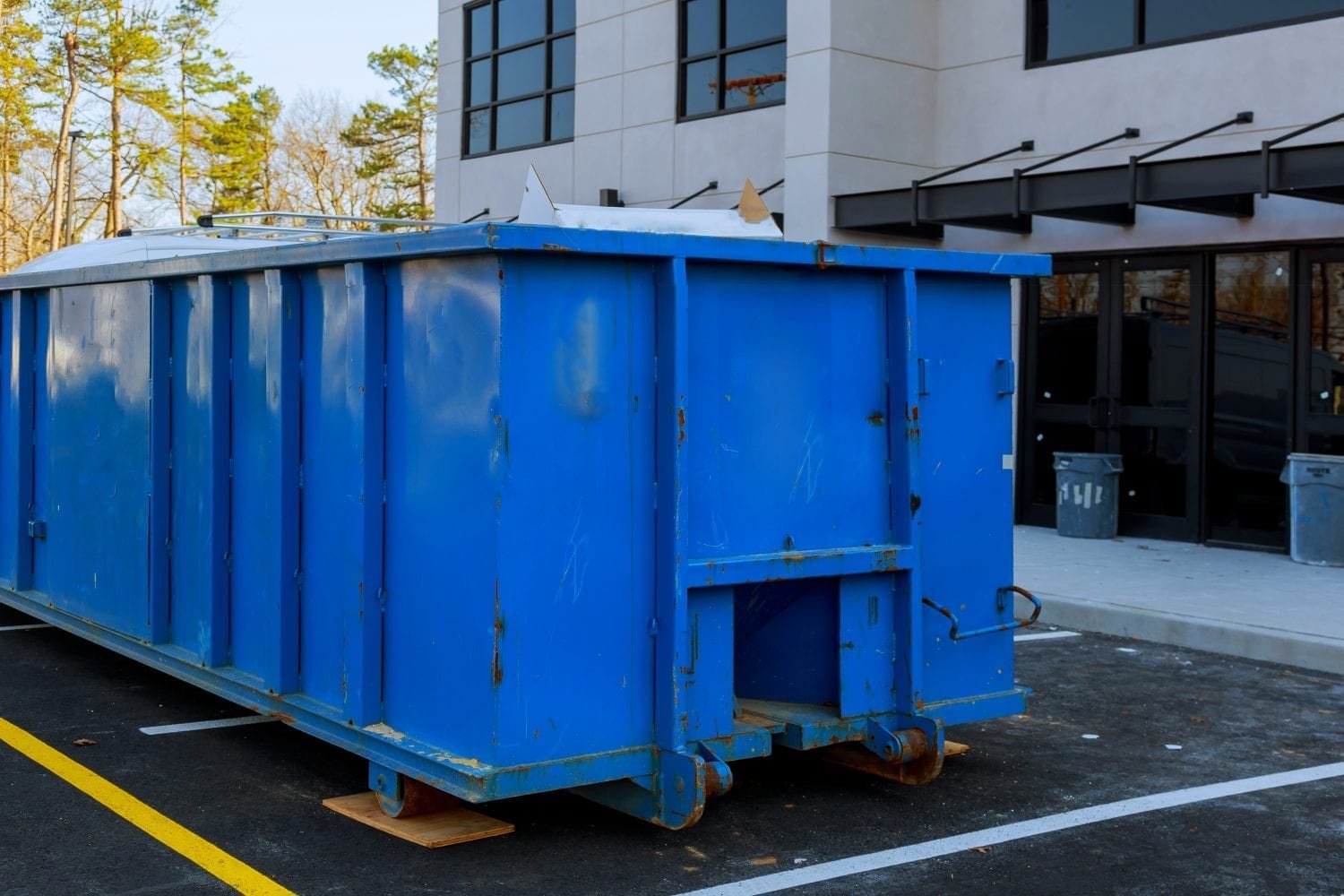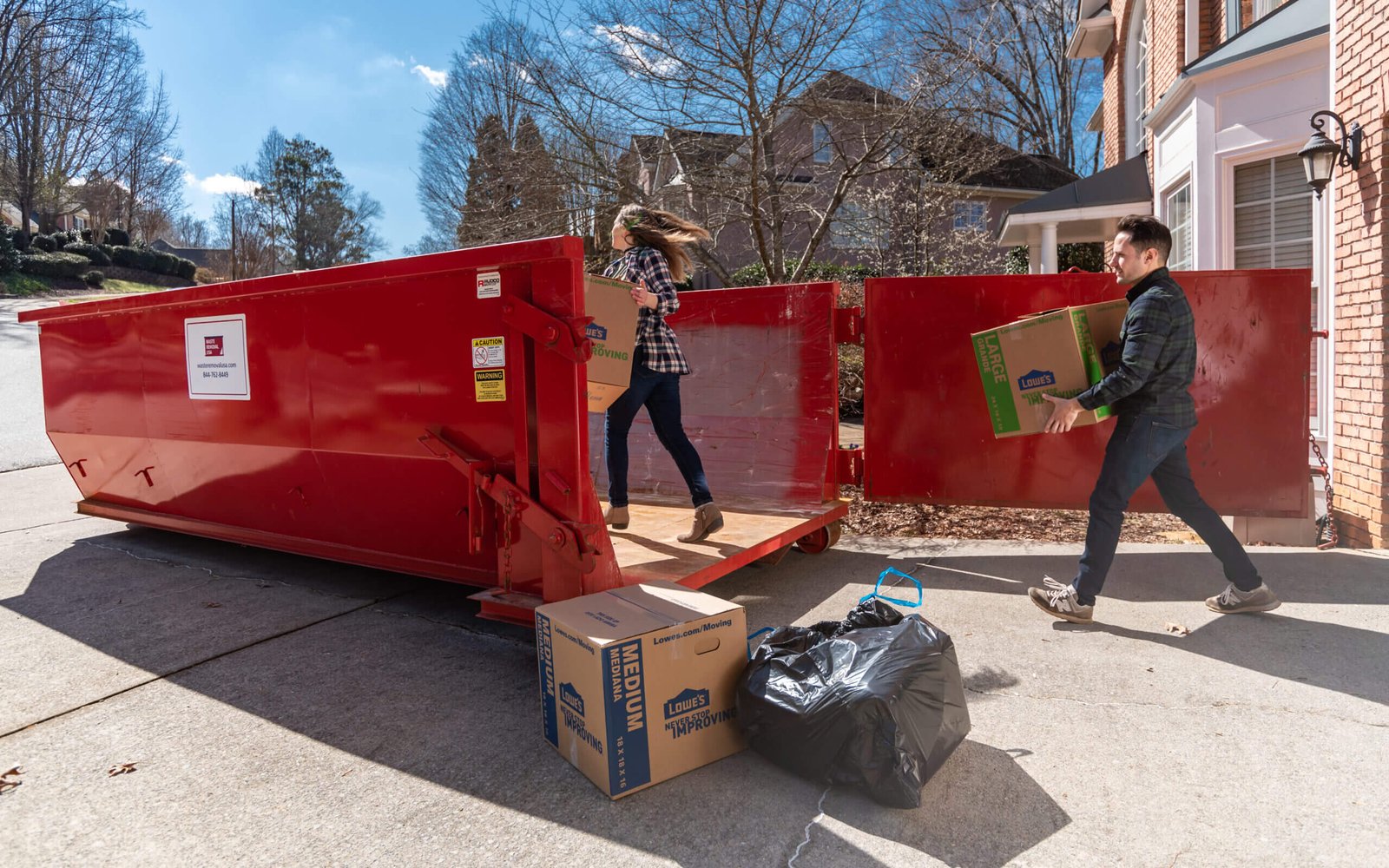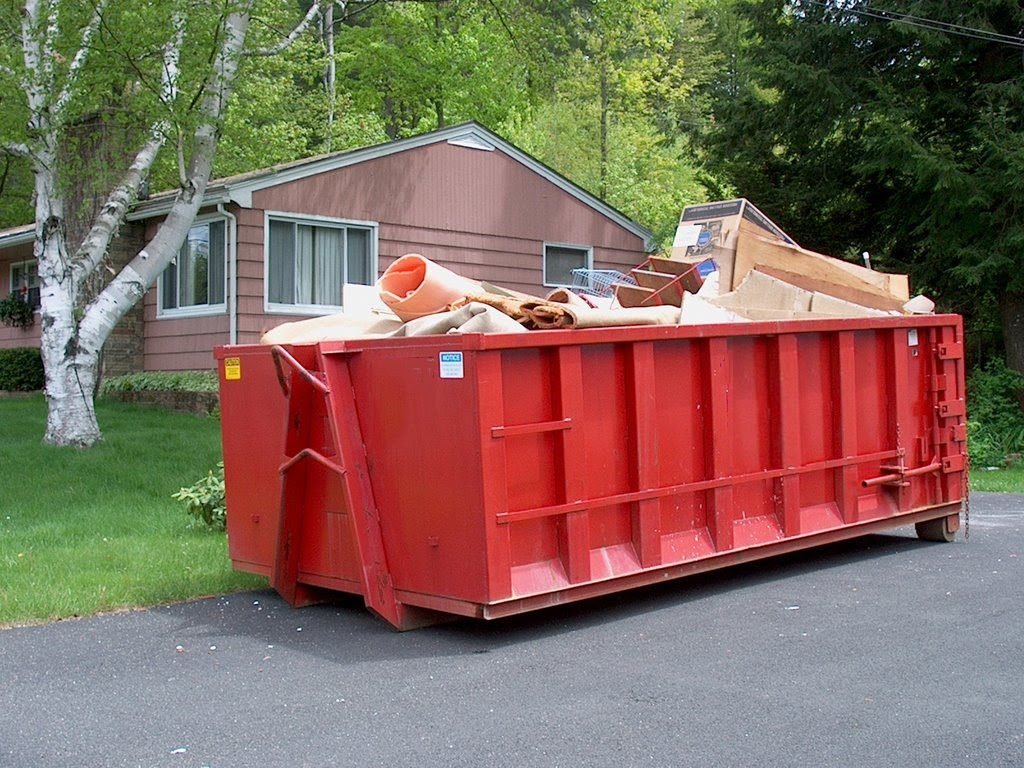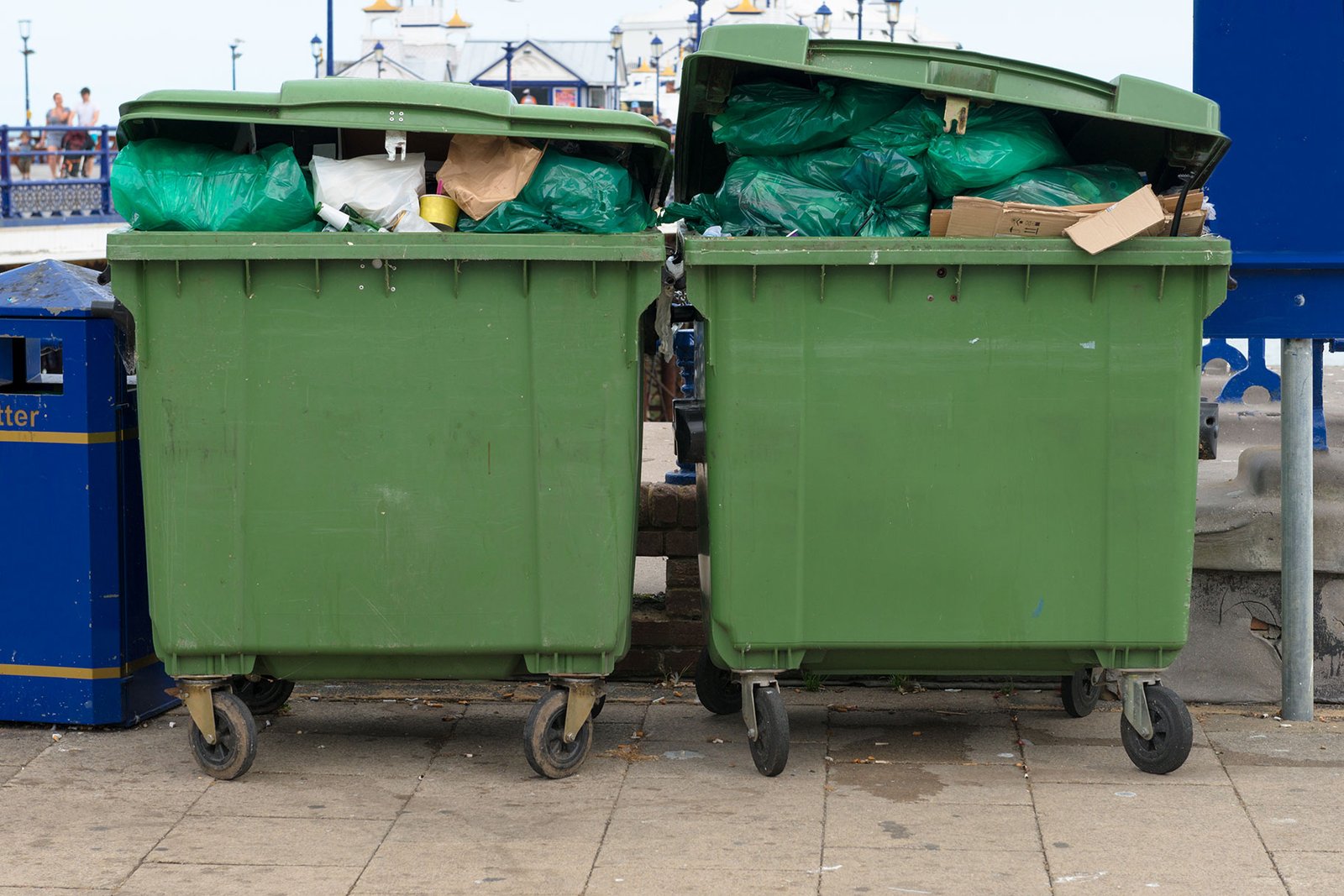Miami is a city known for its vibrant culture and bustling urban lifestyle. With such activity comes the need for efficient waste management systems, including dumpster rentals in Miami FL. However, it is crucial to be aware of the prohibited items that should not be disposed of in these dumpsters. This article serves as a comprehensive guide, outlining the various items that are forbidden for disposal and providing useful insights on responsible waste management practices.
Consider the following scenario: John, a homeowner in Miami, recently rented a dumpster to help with his home renovation project. As he began disposing of his construction debris, he unknowingly included hazardous materials such as paint cans and old batteries. Not only did this violate local regulations but also posed potential risks to both human health and the environment. Instances like these highlight the importance of understanding what can and cannot be thrown into Miami dumpsters. By adhering to proper disposal guidelines, individuals can contribute to maintaining a clean and safe community while avoiding any legal consequences or environmental harm.
Furniture
Furniture disposal is a significant concern when it comes to renting dumpsters in Miami, FL. Improperly disposing of furniture can lead to environmental hazards and pose challenges for waste management companies. To understand the guidelines surrounding furniture disposal, let us consider an example: A family recently moved into a new home in Miami and decided to dispose of their old couch. They rented a dumpster but were unsure if they could simply throw the couch inside.
When it comes to furniture disposal in Miami dumpsters, there are specific rules that must be followed. Firstly, certain types of furniture may not be accepted due to safety concerns or local regulations. Common examples include mattresses, upholstered items infested with bedbugs or other pests, and furniture treated with hazardous materials such as paint or chemicals.
- Mattresses
- Sofas infested with bedbugs
- Upholstered chairs contaminated by hazardous substances
- Furniture coated with toxic paints or varnishes
It is crucial to adhere to these guidelines as improper disposal can have severe consequences on both human health and the environment. Dumpsters are designed for general waste removal; therefore, it is essential to handle specialized items responsibly.
To illustrate this point more clearly, we provide a table outlining some common prohibited furniture items along with reasoning:
| Prohibited Furniture Item | Reasoning |
|---|---|
| Mattresses | Potential breeding ground for pests |
| Infested sofas | Risk of spreading bedbugs |
| Contaminated chairs | Hazardous substances endanger public health |
| Toxic-coated furniture | Harmful chemicals contaminate landfill |
In summary, proper knowledge regarding furniture disposal ensures compliance with regulations while safeguarding public health and protecting the environment. By following these guidelines, individuals can make responsible choices when renting dumpsters in Miami. Moving forward, let us now explore the rules and regulations surrounding the disposal of appliances in Miami dumpsters.
Appliances
appliances. These household devices may seem harmless at first glance, but improper disposal can have detrimental effects on both the environment and public health.
Example:
Consider a scenario where an old refrigerator is carelessly thrown into a dumpster without proper preparation or removal of hazardous components. In this case, harmful refrigerants such as chlorofluorocarbons (CFCs) are released into the atmosphere, contributing to ozone depletion. Additionally, if not disposed of correctly, appliances like refrigerators can pose risks due to their size and weight, potentially causing accidents during transportation or when they reach the landfill.
To ensure responsible waste management practices regarding appliances, it is crucial to be aware of what should never find its way into a Miami dumpster:
- Refrigerators and freezers: Due to their cooling systems containing CFCs or hydrochlorofluorocarbons (HCFCs), these appliances must undergo proper degassing before disposal.
- Air conditioners: Similar to refrigerators and freezers, air conditioning units typically contain refrigerants that need appropriate handling prior to disposal.
- Stoves and ovens: While disposing of these cooking appliances may seem straightforward, it’s important to note that gas lines should be disconnected by professionals before discarding them.
- Washing machines and dryers: Before tossing out these laundry essentials, make sure any remaining water has been drained completely.
Here are some reasons why responsible appliance disposal matters:
- Protecting the environment from harmful gases
- Reducing potential hazards during transportation
- Preventing accidents at landfills
- Promoting sustainable waste management practices
Emotional table:
| Appliance | Hazardous Component | Potential Environmental Impact |
|---|---|---|
| Refrigerators | CFCs or HCFCs | Ozone depletion |
| Air conditioners | Refrigerants | Environmental pollution |
| Stoves and ovens | Gas lines | Fire hazards |
| Washing machines | None | N/A |
To conclude, proper disposal of appliances is essential to mitigate the negative impacts on both our environment and public safety. By adhering to responsible waste management practices, we can safeguard Miami’s ecosystem while promoting sustainable living.
Moving forward, let us now explore the potential risks associated with disposing of hazardous materials.
Hazardous materials
Section H2: Appliances
When it comes to disposing of appliances in Miami dumpsters, there are certain regulations and guidelines that need to be followed. To illustrate the importance of proper disposal, let’s consider a hypothetical case study involving an old refrigerator being improperly discarded.
Imagine a scenario where a homeowner decides to dispose of their outdated refrigerator by simply leaving it next to their dumpster. The refrigerator contains harmful refrigerant gases, such as chlorofluorocarbons (CFCs), which can deplete the ozone layer if released into the atmosphere. Additionally, other components of the appliance, such as its motor and wiring, may contain hazardous materials like lead or mercury.
To ensure safe and responsible disposal of appliances in Miami dumpsters, here are some key considerations:
- Many municipalities require individuals to schedule a special pickup for larger appliances like refrigerators, freezers, or air conditioners.
- Some recycling centers accept appliances for proper dismantling and recycling of their various components.
- In certain cases, local charities or organizations may accept working appliances for donation or resale.
- It is crucial to remove any potentially hazardous materials from appliances before disposal, following appropriate safety procedures.
- By properly disposing of appliances, we contribute to environmental preservation and reduce our carbon footprint.
- Irresponsible disposal practices can harm human health and contaminate natural resources.
- Recycling appliances helps conserve valuable raw materials used in their production.
- Donating working appliances provides assistance to those in need while minimizing waste generation.
Table: Environmental Impact Comparison
| Disposal Method | Environmental Impact |
|---|---|
| Proper Recycling | Low |
| Improper Dumping | High |
| Donation | Moderate |
| Special Pickup | Varied |
As we move forward into the next section about “Hazardous Materials,” it is important to remember that not all items can be disposed of in Miami dumpsters, and certain precautions must be taken to ensure the safety of both individuals and the environment.
Chemicals
When it comes to hazardous materials, proper disposal is crucial to protect public health and the environment. Let’s consider a hypothetical scenario where someone disposes of a canister containing toxic chemicals in a Miami dumpster. This improper act not only poses immediate risks to waste management workers but also increases the potential for contamination of soil and water sources.
To ensure safe waste disposal practices, it is essential to be aware of the specific items classified as hazardous materials. Here are some examples that should never be disposed of in Miami dumpsters:
- Asbestos: Asbestos-containing materials can release harmful fibers when disturbed or damaged.
- Batteries: Batteries contain corrosive substances such as lead, mercury, and cadmium that can contaminate landfills if improperly discarded.
- Fluorescent bulbs: These bulbs contain small amounts of mercury vapor which can pose serious health risks if released into the environment.
- Paints and solvents: Certain paints and solvents may contain volatile organic compounds (VOCs) that contribute to air pollution and groundwater contamination.
It is important to remember that this list is not exhaustive, so always consult local regulations or seek professional advice before disposing of any potentially hazardous material.
Here is a bullet point list summarizing why proper disposal of hazardous materials matters:
- Protecting human health from exposure to toxins
- Preventing environmental contamination
- Ensuring worker safety during waste management processes
- Complying with legal requirements and avoiding fines or penalties
Now let’s take a closer look at how different chemicals should be handled in terms of their disposal methods:
| Chemical | Proper Disposal Method |
|---|---|
| Acids | Neutralization |
| Pesticides | Contact local authorities for drop-off locations |
| Cleaning agents | Follow manufacturer instructions on label |
| Gasoline | Consider recycling options or contact local authorities for disposal |
By following the appropriate guidelines, we can minimize the risks associated with hazardous materials and contribute to a safer environment.
Transitioning into the subsequent section about “Tires,” it is important to recognize that improper Tire disposal also poses significant environmental challenges.
Tires
Having discussed the potential hazards associated with improper disposal of chemicals, we now turn our attention to another category of Prohibited Items—tires. Similar to hazardous chemicals, tires require special handling and disposal procedures due to their environmental impact and potential health risks.
Section – Tires:
To illustrate the importance of proper tire disposal, let’s consider a case study involving an individual who decided to dispose of old car tires by dumping them into a local dumpster. Unbeknownst to this person, abandoned Tires pose a significant threat to public safety as they can become breeding grounds for mosquitoes that carry diseases such as dengue fever or Zika virus. Moreover, when disposed of improperly, tires can leach harmful chemicals into soil and water sources. It is crucial for residents and businesses alike to be aware of the regulations governing tire disposal in order to protect both human health and the environment.
Prohibited Actions:
When it comes to disposing of tires, there are several actions that individuals must avoid:
- Placing whole tires in dumpsters: Dumpsters are not designed or equipped to handle large quantities of tires.
- Burning tires: Tire fires produce toxic fumes and release pollutants into the air.
- Abandoning or illegally stockpiling tires: This not only creates eyesores but also contributes to mosquito infestations and poses fire risks.
- Improperly storing or transporting used tires without appropriate permits: This includes stacking or piling up used tires outdoors without protective measures against rainwater accumulation.
Emotional Bullet Point List (in markdown format):
- Increased risk of disease transmission through mosquito breeding grounds
- Contamination of soil and water sources with hazardous substances
- Negative effects on aesthetic appeal and community well-being
- Potential for fire hazards and toxic air pollution
Emotional Table (in markdown format):
| Prohibited Actions | Environmental Impact | Public Safety Concerns |
|---|---|---|
| Placing whole tires in dumpsters | Soil and water contamination | Increased risk of disease transmission |
| Burning tires | Air pollution | Fire hazards |
| Abandoning or illegally stockpiling tires | Aesthetic degradation | Mosquito infestations |
| Improperly storing or transporting used tires without appropriate permits | N/A | N/A |
In light of the potential risks associated with tire disposal, it is essential that we also address another category of prohibited items—batteries.
Batteries
When it comes to disposing of batteries in Miami dumpsters, it is essential to follow specific guidelines due to their potentially harmful effects on the environment. To understand why proper disposal is crucial, let’s consider a hypothetical scenario. Imagine that a large number of discarded batteries end up in landfills where they eventually break down and release toxic chemicals into the soil and groundwater. This contamination can have far-reaching consequences for both human health and ecosystem balance.
To ensure responsible battery disposal, here are some key points to keep in mind:
- Types of Batteries: Different types of batteries require different methods of disposal. It is important to be aware of which category a battery falls under before tossing it into a dumpster.
- Hazardous Materials: Many common household batteries contain hazardous materials such as lead, mercury, or cadmium. These substances can pose serious risks if not handled properly during disposal.
- Recycling Programs: Instead of discarding batteries in regular trash bins or dumpsters, consider utilizing local recycling programs specifically designed for battery collection. These programs often provide safe and environmentally-friendly ways to dispose of old or expired batteries.
- Retailer Assistance: Some retailers offer take-back programs where you can return used batteries for proper disposal or recycling. Check with your local stores to see if they participate in such initiatives.
By following these guidelines, we can minimize the negative impact that improperly disposed batteries may have on our environment and overall well-being.
| Type of Battery | Proper Disposal Method |
|---|---|
| Alkaline | Can usually be thrown away with regular trash but check local regulations |
| Lithium-ion | Should be recycled through specialized facilities |
| Lead-acid | Must be taken to designated collection centers |
| Nickel-cadmium | Recycle at authorized drop-off locations |
In considering the environmental implications associated with improper battery disposal, it becomes evident that responsible handling is essential. Neglecting proper disposal methods can result in hazardous materials seeping into our soil and water sources, posing risks to both ecosystems and human health.
Moving forward, let’s explore the next section on disposing of construction debris without causing harm to the environment or violating any regulations.
Construction debris
When it comes to disposing of construction debris, it is important to follow proper guidelines to ensure the safety and cleanliness of our environment. One hypothetical example that highlights the significance of this issue involves a construction site in Miami where improper disposal practices resulted in harmful pollutants entering nearby water sources.
To avoid such scenarios, here are some key points to consider when dealing with construction debris:
- Concrete and Bricks: These materials can be reused or recycled. Consider finding local recycling centers that accept these items.
- Wood Waste: If possible, repurpose wood waste for other projects or donate it to organizations that specialize in salvaging building materials.
- Asphalt Shingles: Many companies now offer recycling services for asphalt shingles, as they can be turned into new products like pavement.
- Metal: Metal scraps from construction sites should be properly separated and taken to metal recycling facilities.
Proper disposal of construction debris not only helps protect the environment but also supports sustainable practices within the industry.
| Materials Accepted | Materials Not Accepted | Special Instructions |
|---|---|---|
| Concrete | Hazardous chemicals | Sort materials before disposal |
| Bricks | Paint cans | Avoid mixing different types of debris |
| Wood | Propane tanks | Check local regulations regarding specific materials |
| Asphalt Shingles | Asbestos-containing items |
By following these guidelines and ensuring responsible disposal methods, we can contribute towards a cleaner and more environmentally friendly Miami.
Moving forward, let’s explore another category of prohibited items: Electronics.
Electronics
Construction Debris
After understanding the guidelines for disposing of construction debris in Miami dumpsters, let us now explore another category of prohibited items: electronics.
Imagine a situation where an individual decides to dispose of their broken laptop by throwing it into a dumpster. While this may seem like a convenient solution, it can have harmful consequences for both the environment and human health. Electronic waste, or e-waste, contains hazardous materials such as lead, mercury, cadmium, and flame retardants that can contaminate soil and water sources if not properly handled.
To ensure responsible disposal practices and protect our surroundings from potential harm, it is essential to be aware of which electronic items should not be disposed of in Miami dumpsters. Here are some examples:
- Computers (desktops, laptops)
- Televisions
- Printers
- Cell phones
Disposing of these devices in regular trash bins or dumpsters increases the risk of toxic substances leaching into the ground when they end up in landfills. To promote sustainability and prevent environmental damage caused by improper disposal methods, consider alternative options for recycling your electronic waste.
Here’s an emotional response-evoking bullet point list to emphasize the importance of proper e-waste disposal:
- 🚫 Avoid tossing electronics into dumpsters!
- ♻️ Recycle your e-waste responsibly.
- 👥 Protect our environment from harmful toxins.
- 💡 Choose eco-friendly alternatives for disposing of electronics.
Additionally, here is a table highlighting the hazardous components commonly found in different types of electronic devices:
| Electronic Device | Hazardous Components |
|---|---|
| Computer | Lead, Mercury |
| Television | Cadmium |
| Printer | Flame Retardants |
| Cell Phone | Lithium-ion Battery |
By being mindful of what constitutes electronic waste and adhering to proper disposal procedures, we contribute towards preserving our environment and safeguarding the well-being of future generations. With this awareness, let us now explore another category of prohibited items that should not be disposed of in Miami dumpsters: medical waste.
Medical waste
When it comes to proper disposal, medical waste poses unique challenges due to its potential health and environmental risks. To illustrate the importance of handling medical waste responsibly, let’s consider a hypothetical scenario. Imagine a local hospital in Miami that failed to adhere to proper medical waste disposal protocols. As a result, contaminated syringes and used surgical materials were disposed of incorrectly, leading to an outbreak of infections among both patients and staff members.
Ensuring safe disposal practices for medical waste is crucial not only for protecting public health but also for preventing adverse impacts on the environment. Here are some key considerations when it comes to disposing of medical waste properly:
- Segregation:
Medical waste should be segregated at the point of generation into different categories based on its characteristics. This helps ensure the appropriate handling and treatment required for each type of waste. The following bullet-point list provides examples of common types of medical waste that require separate management:
- Contaminated sharps (e.g., needles, scalpels)
- Infectious or potentially infectious waste (e.g., blood-soaked bandages)
- Pathological waste (e.g., tissues, organs)
- Pharmaceutical waste (expired or unused medications)
-
Packaging:
Proper packaging is essential to minimize potential risks during transportation and storage. Medical waste must be placed in sturdy leak-proof containers specifically designed for this purpose. These containers should be labeled with clear signage indicating their contents and any associated hazards. -
Treatment and Disposal:
Once appropriately packaged, medical waste needs to undergo specific treatment processes before final disposal. Common methods include incineration, autoclaving (steam sterilization), or chemical disinfection. Following treatment, the resulting nonhazardous residue can then be safely disposed of according to established regulations. -
Compliance with Regulations:
It is vital for healthcare facilities and individuals generating medical waste to comply with all relevant federal, state, and local regulations. These rules outline specific requirements and standards for the handling, storage, transportation, treatment, and disposal of medical waste. Non-compliance can lead to severe penalties and potential harm to public health and the environment.
By adhering to proper procedures in managing medical waste, we can minimize the risks associated with its improper disposal. Next, we will explore another category of prohibited items: flammable substances.
[Transition sentence into the subsequent section about “Flammable Substances”]
Flammable substances
Section H2: Medical Waste
As we’ve discussed the importance of disposing of medical waste properly, let’s now turn our attention to another category of Prohibited items for disposal in Miami dumpsters: flammable substances. Ensuring that these hazardous materials are handled correctly is crucial to maintaining a safe environment and preventing any potential accidents.
Section H2: Flammable Substances
Imagine a scenario where an individual discards a canister filled with gasoline into a dumpster without realizing its implications. This simple act could lead to disastrous consequences such as fires or explosions. To prevent such incidents, it is essential to be aware of which flammable substances should never find their way into Miami dumpsters.
Flammable substances include various chemicals, gases, and liquids that have low ignition points and emit vapors that can ignite easily when exposed to heat, sparks, or flames. The following list highlights some common examples of flammable substances that cannot be disposed of in Miami dumpsters:
- Gasoline
- Propane tanks
- Aerosol cans containing flammable products like hairspray or spray paint
- Lighter fluid
These examples serve as reminders of how seemingly innocuous household items can pose significant risks if mishandled during disposal.
Emotional bullet point list (markdown format):
The improper disposal of flammable substances can result in:
- Devastating fires that endanger lives and property.
- Harmful effects on the environment due to toxic fumes released during combustion.
- Emergency response situations requiring extensive resources and personnel.
- Potential legal consequences for individuals responsible for negligence.
Table (markdown format) – Substance Properties Comparison:
| Substance | Ignition Point | Vapour Density | Flash Point |
|---|---|---|---|
| Gasoline | -45 °C | 1.4 times air | -40 °C |
| Propane | -156 °C | 1.5 times air | -104 °C |
| Aerosol Cans | n/a | Varies | Below room temperature |
| Lighter Fluid | <0 °C | 2.08 g/L | -45 °C |
Please note that this table serves as a general reference and should not be considered exhaustive.
Understanding the dangers associated with flammable substances is crucial, but it is equally important to address another category of prohibited items: paints and solvents. By exploring proper disposal methods for such materials, we can continue to prioritize safety and environmental responsibility in Miami’s waste management practices.
Paints and solvents
Imagine a scenario where a homeowner in Miami, FL decides to dispose of an old can of paint by tossing it into a dumpster. Unbeknownst to them, this seemingly harmless act could have serious consequences for both the environment and public safety. In this section, we will explore why paints and solvents are prohibited from being disposed of in Miami dumpsters.
Potential Hazards:
- Environmental Impact: Paints contain various chemicals that can be harmful when released into the environment. When dumped into landfills or exposed to rainwater, these substances may leach into the soil and contaminate nearby water sources. This contamination has far-reaching effects on ecosystems and can harm plants, animals, and aquatic life.
- Fire Hazard: Certain types of paints and solvents are highly flammable due to their chemical composition. Improper disposal in dumpsters poses a significant fire risk not only within the container but also during transportation or at waste management facilities. The potential for fires caused by these materials underscores the importance of adhering to proper disposal methods.
- Health Risks: Inhalation or direct contact with volatile compounds found in paints and solvents can lead to respiratory problems, skin irritation, dizziness, nausea, and even more severe health issues if exposure is prolonged or repeated over time. Protecting human health should always be a priority when considering waste disposal practices.
To ensure safe waste management practices and prevent environmental damage or hazards associated with paints and solvents, here is a list of items that should never be disposed of in Miami dumpsters:
- Oil-based paints
- Latex paints
- Paint thinners
- Varnishes
Table – Prohibited Items:
| Prohibited Items |
|---|
| Oil-based paints |
By strictly adhering to these guidelines and refraining from disposing of paints and solvents in dumpsters, we can protect our environment, reduce fire risks, and safeguard public health. With an understanding of the potential dangers associated with these substances, it is crucial to explore alternative ways for their safe disposal.
Moving forward, let’s delve into another category of prohibited items: explosives.
Explosives
Moving on from the risks associated with paints and solvents, it is important to address another category of prohibited items that pose a significant threat when disposed of improperly. Expanding our understanding beyond chemicals commonly found in households, we now delve into the realm of explosives.
Explosives are highly dangerous materials that can cause severe harm if mishandled or disposed of incorrectly. To illustrate this point, consider a hypothetical scenario where an individual decides to dispose of firecrackers by throwing them into a dumpster. Such reckless behavior can lead to unintended explosions within the confined space, jeopardizing not only those nearby but also potentially causing damage to property and infrastructure.
To better inform you about prohibited explosive items for disposal, here are some key points to bear in mind:
- Fireworks: Whether unused or partially used fireworks, these should never be placed in dumpsters due to their volatile nature.
- Ammunition: Any type of live ammunition poses a grave risk if mistakenly ignited or subjected to heat. Proper channels must be followed for safe disposal through local law enforcement agencies.
- Blasting Caps: These devices contain highly sensitive explosives designed to initiate larger detonations. Their improper disposal can have catastrophic consequences.
- Dynamite and TNT: Both dynamite sticks and trinitrotoluene (TNT) are potent explosives often associated with construction activities. They require specialized handling and cannot be discarded casually.
The following table provides examples of other common explosive items that must never find their way into dumpsters:
| Item | Risk | Safe Disposal Method |
|---|---|---|
| Detonators | High risk of accidental ignition | Contact local authorities for appropriate steps |
| C4 | Highly explosive plastic material | Hand over to authorities for controlled disposal |
| Nitroglycerin | Extremely unstable and volatile | Consult with hazardous waste management services |
| Black powder | Easily ignited and combustible | Dispose through authorized agencies |
In light of the dangers posed by explosives, it is crucial to exercise extreme caution when handling or disposing of such materials. Always consult local regulations and seek professional guidance from law enforcement agencies or specialized waste management services.
By recognizing the inherent risks associated with explosives and adhering to proper disposal procedures, we can collectively ensure the safety of our communities while also protecting our environment.
